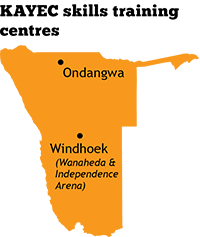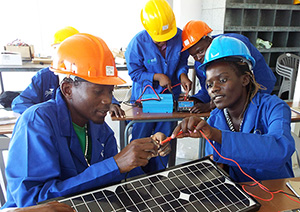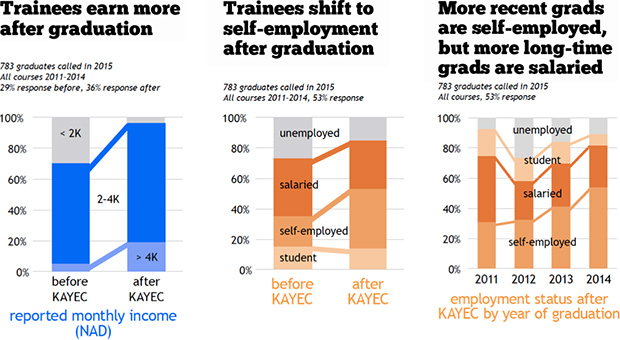 KAYEC began skills training services at our Wanaheda (Windhoek) centre in 1995, just after independence, to help combat the nation’s critical levels of youth unemployment. In 2002 we opened our second centre in Ondangwa (see map). Today we graduate up to 750 trainees each year.
KAYEC began skills training services at our Wanaheda (Windhoek) centre in 1995, just after independence, to help combat the nation’s critical levels of youth unemployment. In 2002 we opened our second centre in Ondangwa (see map). Today we graduate up to 750 trainees each year.
In Namibia, nearly half of 15- to 34-year-olds are in need of work, short on key skills that our market demands. Trade schools are a central part of the solution: The National Development Plan 4 calls for vocational education “targeting the entire country,” and Namibia has opened a nationwide network of Vocational Training Centres for students who have finished Grade 10.

See the full list of our courses here.
The following charts show results from our tracer study in 2015, contacting trainees who had graduated from KAYEC in 2011–2014.
According to our trainees’ responses, average income goes up after graduation from KAYEC (left chart), and the share of unemployment shrinks (middle chart). With all graduating classes combined (middle chart), the share who were self-employed grew larger after graduation, and the share who were salaried shrank – but when each graduating year is split apart (right chart), trainees were more likely to say they were self-employed the more recently they had graduated. By the class of 2011, the largest share said they had found salaried work.


When will January 2022 intake application form be out
Please visit our website and select the vocational tab and go to the trade you wish to enroll in to get the application form.
https://kayec.org/home-page/